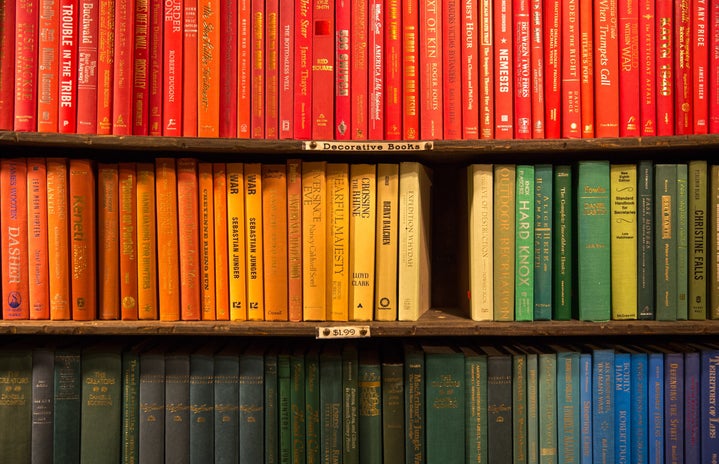As England struggles through its third national lockdown, with ‘no evidence of decline’ on rates of COVID-19, I’m searching every corner for more immersive and distracting forms of entertainment, preferably ones that drag me away from the blue light of screens. And with a huge cultural shift towards more traditional arts and crafts, from knitting and gardening to making sourdough from scratch, I’d like to suggest exploring another traditional past time: myths.
Myths are essentially like reading fairy tales, with the historical and cultural significance of ancient artefacts, mirroring a culture’s value systems and hierarchical structures in the vivid tales of erratic gods. While recent adaptations mean there is a general awareness of Greek myths, from Rick Riordan and Madeline Miller to Netflix’s Blood of Zeus (2020), the Norse myths are less familiar but equally as delightful.
Neil Gaiman’s Norse Mythology (2017) is my favourite retelling of these stories, and his introduction, when he encourages readers to ‘read the stories in this book, then make them your own’ and ‘tell your friends what happened’ on ‘some dark and icy winter’s evening’, reminds us of the oral customs of the myths.
These glorious tales are transcriptions of stories traditionally spoken out loud to a group; their foundations lie in community and curiosity, seeking to explain unsolved mysteries, and remain captivating as they allow us to reflect on what remains relevant or inexplicable. As our understanding of togetherness and how to maintain relationships has shifted, these stories offer an opportunity to share the origins of rainbows, thunder, and bad poetry ‘with an audience of people’ who want to know ‘how to live their lives’, which Gaiman identifies as the true ‘joy of myths’.
The beauty of Gaiman’s retelling also stretches past its social function, as the dark and chaotic details draw us deeply into his imagination of ‘the lands where these stories were first told’. The intricate tale of the world’s beginning starts familiarly; ‘Before the beginning there was nothing’, and thereafter delves into unfamiliar places, teeming with harsh consonants: Niflheim, the dark world. Ymir, ancestor of giants. Nidavellir, sometimes called Svartalfheim, the world of the dwarves. The gods’ nine worlds and their adventures are both lively and violent. They belonged to a culture whose people believed that noble deaths in battle were rewarded by beautiful battle-maidens, who carried the fallen to Valhalla, to blissfully feast and fight for eternity. The gravity of these stories, however, is cemented in the gods’ doomsday: Ragnarok, ‘the twilight of the gods’, in which ‘the world is cremated in flames’ so that ‘nothing will remain of the armies of the living, of the dreams of the gods’.
For many of us, having faced endless disasters this past year, the Norse gods’ impending apocalypse may satisfy what Teresa Heffernan refers to as ‘the need to understand ourselves’ through ‘the catastrophic cleansing of the world […] and its disturbing comfort in knowing absolute finality and order’. Gaiman himself echoes this sentiment, explaining how ‘the fact that the world and the story ends … and is reborn’ made the frost giants, trolls and ogres linger, seeming ‘strangely present and current’.
This sense of finality is a truly dark appeal, which is nonetheless eased by the characters themselves. In the gaps between lost details (as the stories were communicated orally, little was written down by the Norse), Gaiman creates exceptionally specific characterizations. We meet Loki, ‘Thor’s friend and Thor’s betrayer’, Odin, all-father of the gods and mortals, and Freya, ‘more beautiful than either the sun or the moon’, but more importantly, witty, daring, and unyielding. In a BBC interview, Gaiman clarifies that ‘what is so marvellous about the gods is how human they are. There is no infallibility’ (BBC 2018). Their humanity embodies eternally contemporary themes of love and betrayal, greed and power. These themes lighten the shadow of the approaching apocalypse, and ultimately are what make these stories most empathetic. Filled with the same ‘delight and puzzlement’ that Gaiman himself first experienced, the Norse myths are thus a reminder to consider the forms of stability that we seek, and to reach to the past to borrow strength from these oral traditions.
References:
Gaiman, N. Norse Mythology (Bloomsbury, 2017)
Heffernan, T. ‘Conclusion: The Return of End Times’, Post-Apocalyptic Culture: Modernism, Postmodernism, and the Twentieth-Century Novel, (University of Toronto Press, 2008), pp. 150-156


